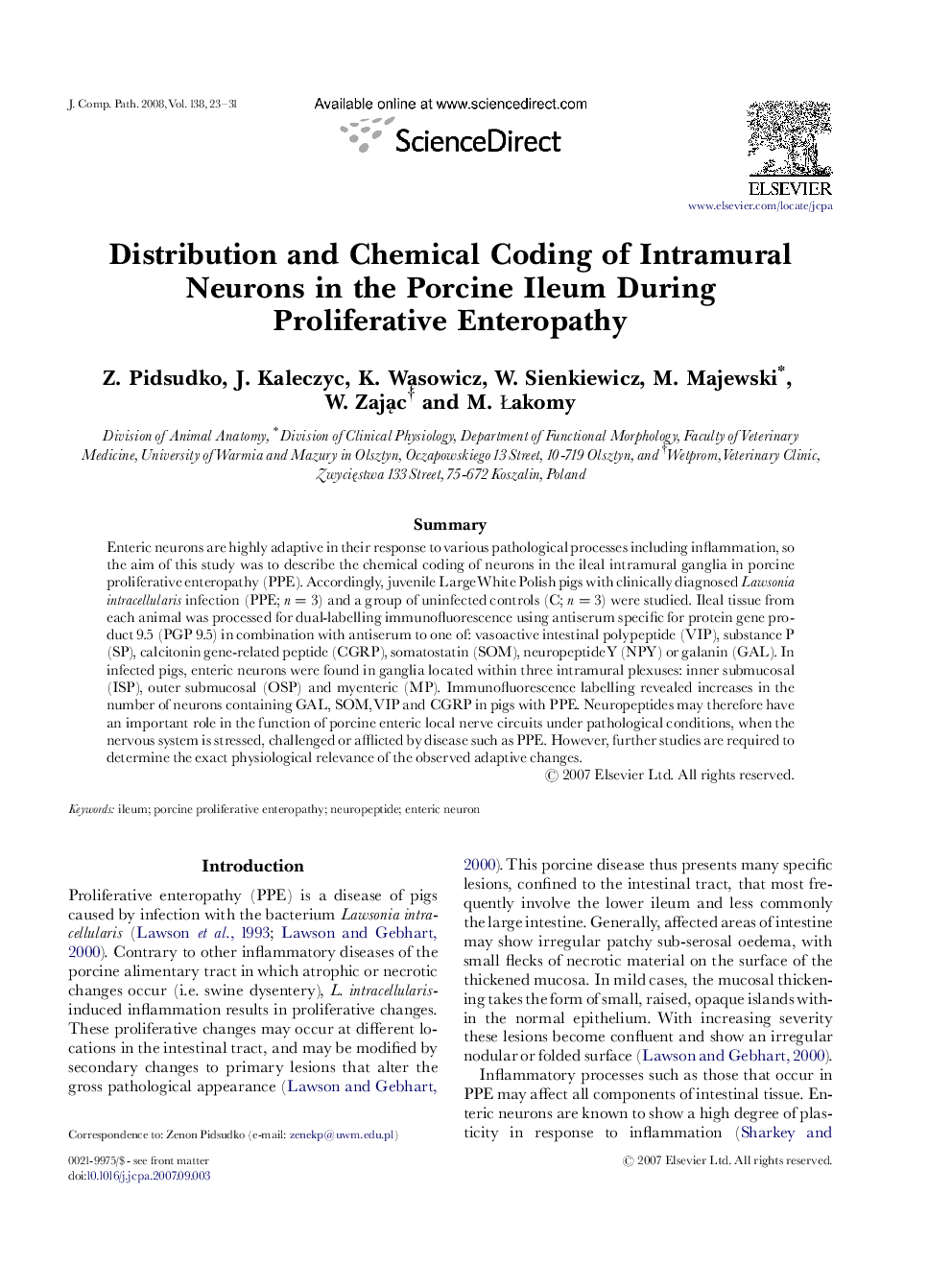| Article ID | Journal | Published Year | Pages | File Type |
|---|---|---|---|---|
| 2438540 | Journal of Comparative Pathology | 2008 | 9 Pages |
SummaryEnteric neurons are highly adaptive in their response to various pathological processes including inflammation, so the aim of this study was to describe the chemical coding of neurons in the ileal intramural ganglia in porcine proliferative enteropathy (PPE). Accordingly, juvenile Large White Polish pigs with clinically diagnosed Lawsonia intracellularis infection (PPE; n=3) and a group of uninfected controls (C; n=3) were studied. Ileal tissue from each animal was processed for dual-labelling immunofluorescence using antiserum specific for protein gene product 9.5 (PGP 9.5) in combination with antiserum to one of: vasoactive intestinal polypeptide (VIP), substance P (SP), calcitonin gene-related peptide (CGRP), somatostatin (SOM), neuropeptide Y (NPY) or galanin (GAL). In infected pigs, enteric neurons were found in ganglia located within three intramural plexuses: inner submucosal (ISP), outer submucosal (OSP) and myenteric (MP). Immunofluorescence labelling revealed increases in the number of neurons containing GAL, SOM, VIP and CGRP in pigs with PPE. Neuropeptides may therefore have an important role in the function of porcine enteric local nerve circuits under pathological conditions, when the nervous system is stressed, challenged or afflicted by disease such as PPE. However, further studies are required to determine the exact physiological relevance of the observed adaptive changes.
